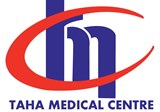“Smile and the world smiles with you”, it is said. A smile is the easiest indicator of confidence when you meet a person for the first time. It is for the same reason that not being satisfied with your smile can drastically impact your confidence and ability to interact with others. This is where orthodontics can be of help.
What is Orthodontics?
Orthodontics is the branch of dentistry that specializes in the prevention and correction of irregularities in the teeth. Problems with alignment of bite and straightening of teeth that are crooked, overlapping, or twisted as well as obvious gaps in the teeth are dealt with in this dental specialty. The dental services are delivered by a dental specialist known as the orthodontist.
Difference Between Dentist and Orthodontist
Dentists are medical professionals trained in overall issues of the teeth, gums, nerves, and jaw. To work in any of the specializations of dentistry, a professional first needs to complete training as a dentist. An orthodontist is a dentist who has taken specialized training in the correction of bites, occlusion, straightness of the teeth, and how the teeth come in contact with each other. All orthodontists are dentists but all dentists cannot perform the specialized treatments in orthodontics.
Benefits of Orthodontics
More than aesthetics, misalignment of bite and other irregularities in the teeth can affect the functionality of the mouth and have bigger consequences both on oral health and on overall physical health and mental wellbeing. You should consult an orthodontist if you have any of the below dental issues:
- Misalignment of teeth so that they do not appear in a straight arc
- Incorrect bite where the upper and lower teeth do not meet correctly
- Problems with speech or chewing
- Damage to prominent teeth from excessive wear and tear
- Closing wide gaps between teeth
- Cleft lip or palate
Diagnosis in Orthodontic Treatments
Orthodontists have been trained to accurately assess whether the patient needs orthodontic treatment and what type of orthodontic appliance will be most suited for his / her particular needs. The final diagnosis is arrived at after understanding the patient’s medical and dental health history, conducting a clinical examination, studying the x-rays of the teeth and the jaws, and making plastic models of the teeth.
Orthodontic Treatments
In children, it is ideal to start orthodontic treatment after permanent teeth have set in and when the jaw is still developing which is around 10-12 years of age. There is no fixed age for starting treatment for adults, provided there is good oral hygiene. This is because orthodontic treatments can sometimes carry the risk of tooth decay and gum issues as proper cleaning and maintenance of the teeth may be difficult during treatment.
Types of Orthodontic Treatments
Orthopedic appliances in orthodontics are used to guide the growth and development of the jaw and facial bones, particularly in children and adolescents. These appliances can help correct issues such as:
– Bite problems (e.g., overbite, underbite)
– Crossbite
– Crowding
– Protruding teeth
– Sleep apnea
– TMJ disorders
Some examples of commonly used orthopedic appliances are as follows:
Headgear: Applies pressure to the upper teeth and jaw to correct overbite and protruding teeth.
Chin cups: Used to correct overbite and protruding lower jaw.
Face masks: Attached to the teeth, these masks help correct underbites.
Functional appliances: Help improve jaw alignment and bite by training the jaw to function properly.
Twin blocks: Used to correct overbites and protruding teeth.
Herbst appliances: Help correct overbite and protruding teeth.
Palate Expanders – Expanders are part of orthodontic treatment for children where the palatal expander is worn to widen the developing upper jaw to create more space without resorting to tooth extraction or other procedures.
These appliances work by applying gentle pressure to the teeth and jaw, guiding growth and development towards a more harmonious bite and facial structure.
When we talk about fixed orthodontics treatment, dental braces come to mind.
Dental Braces use a combination of brackets, bands, and wires to gradually shift teeth into their desired positions. Popularly, there are four different types of braces – metal braces, ceramic braces, lingual braces, and self-ligating braces. The braces are fixed to the teeth and are worn for the entire duration of the treatment.
Aligners – Clear orthodontic aligners (popular brands being Invisalign® and ClearCorrect®) have the same function as braces but use custom-made, clear aligner trays to move the teeth into the desired positions instead of brackets, bands, and wires. The trays will need to be changed every few weeks as the teeth gradually shift to the new position.\
Retainers – Dental retainers are used after the orthodontic treatment is completed to ensure that the teeth that have shifted into the desired positions do not go back to their older spaces. Retainers can be permanent or removable, depending on the extent of treatment, the age of the patient, and whether the retainers are for the upper or lower arch.
Impact of Orthodontic Treatments
By straightening misaligned teeth and correcting jaw deformities, orthodontic treatments can help patients get a more harmonious and attractive smile, boost their confidence to eat in front of others, and improve their facial appearance. The impact of the treatments often goes beyond physical appearance and brings a significant improvement in the patient’s self-esteem and ability to interact with others.
Orthodontics at Taha Medical Centre
The orthodontic department at Taha Medical Centre is well-equipped with state-of-the-art technology and dental equipment needed to accurately diagnose and treat orthodontic issues in patients. Our orthodontic experts are experienced in treating children as well as adults for various orthodontic problems including malocclusions, straightening of teeth, and correction of smiles.

